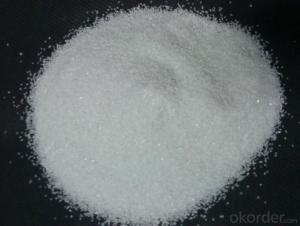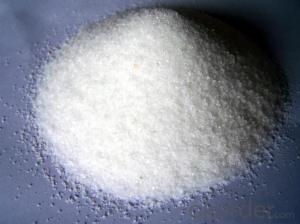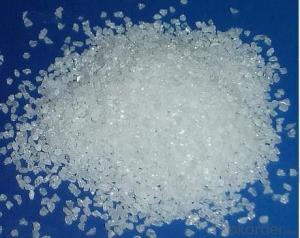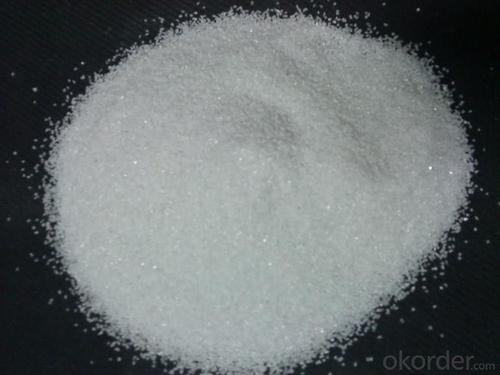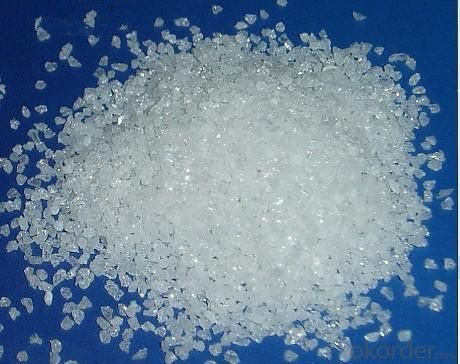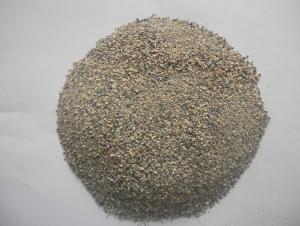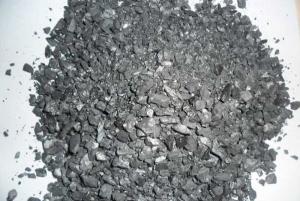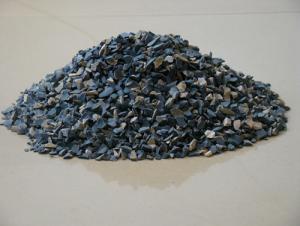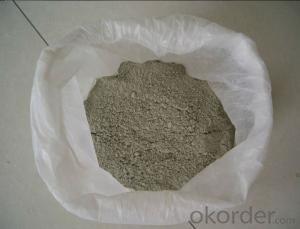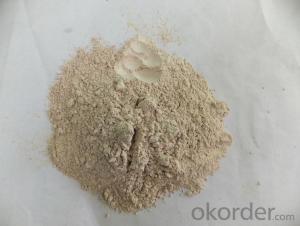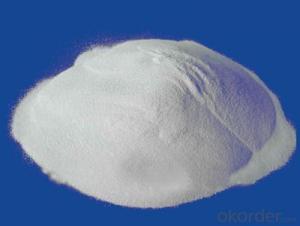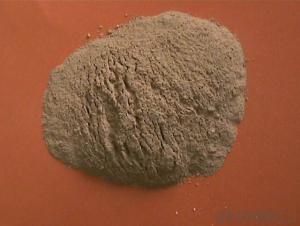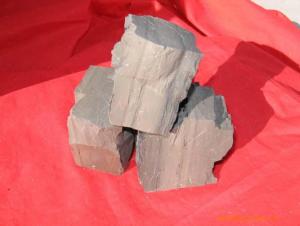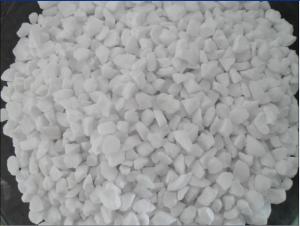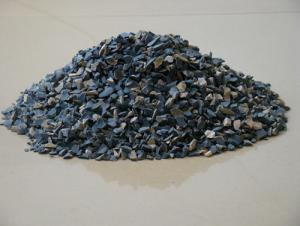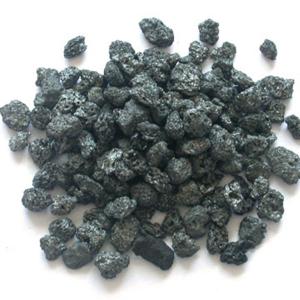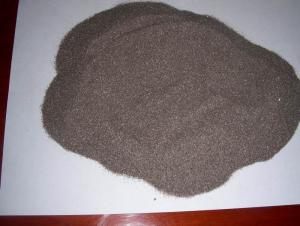Raw Materials for Refractory - White Fused Alumina 99.5
- Loading Port:
- Tianjin
- Payment Terms:
- TT OR LC
- Min Order Qty:
- -
- Supply Capability:
- 1000MT m.t./month
OKorder Service Pledge
Quality Product, Order Online Tracking, Timely Delivery
OKorder Financial Service
Credit Rating, Credit Services, Credit Purchasing
You Might Also Like
Specification of white fused alumina
Item | B.D(g/cm3) | Apparent Porosity | Chemical Composition | |||
AL2O3 | Fe2O3 | SiO2 | NaO2 | |||
WFA | 3.7 | 7.8% | 99.2%min | 0.1%max | 0.2%max | 0.3%max |
Packaging & Shipping
In 1MT jumbo bag or as the buyer request.
We ship the cargo in 20' GP containers,each container loads 25MT/20bags.
Application of white fused alumina
1.Light-weight insulating refractories
2.Shaped and unshaped refractories
3.Pre-cast shapes and castables
4.High Alumina Refractory mixes and gunning mixes
- Q: How to calculate the thickness of choosing refractory? Such as steel ladle should choose what kind of refractory and using what thicknes?
- The relative production is lower and material cost is higher, the lining of the refractory is thicker: 1, determine the weight of the refractory material according to the main structure of the bearing capacity, to prevent damage to equipment, fire-proof material damage after the surplus size and thickness of the thermal conductivity of refractory materials, the smaller the effective volume, production output, the cost of materials) to consider the selection of refractory material thickness. 3 from the point of usage (usage cycle, relative usage cycle is longer, because under the condition of invariable in the device's overall dimensions of the refractory lining thickness to determine several basic principles, according to the volume of the weight computation of refractories and refractory thickness, these items must be fully consider the pros and cons before decided. 2 according to maximum temperature that shell can withstand.
- Q: what kind of fireproof materials is used for high rise buildings?
- steel is recommended As a form of high-rise building structure, steel is widely used especially in the ultra-high-rise and long span construction showing strong vitality, for its high strength, light weight, and good extensibility, resistance to shock and short construction period. The mechanical strength of steel decreases with rising temperature at about 5000 ℃, decreasing about 40%-50%. the mechanical properties of steel, such as yield points, compressive strength, elastic modulus, and load capabilities have declined rapidly , quickly losing their ability to support, leading to building collapse. Therefore, it is imperative to protect steel structures. Brushing or spraying the coating on the surface of steel structure to prevent burning and insulate heat. It also prevents undermining the rolled steel from rapid temperature elevation and avoid collapse of building for lose of supporting capacities.
- Q: What is the concept of lightweight refractory material?
- Lightweight refractory material has high porosity, mechanical strength and erosion resistance. Compared with normal refractory bricks, it is a kind of refractory material with large volume shrinkage in high temperature, low thermal conductivity and small bulk density. It is used as thermal insulation material in industrial furnace and other thermal equipments. It has poor wear resistancel.
- Q: Why do magnesium oxide refractory bricks can be made into refractories?
- Because the magnesium oxide, commonly known as magnesia, which is a basic oxide, with the common property of alkali oxides and belongs to the cementitious material . It is white or light yellow powder, odorless, tasteless, non-toxic and a typical of alkaline earth metal oxide, whose chemical formula is MgO. It is white powder, with melting point of 2852 ℃, boiling point of 3600 ℃ and relative density of 3.58 (25 ℃). The magnesium oxide that is soluble in acid and ammonium hydroxide solution has high insulation properity. After high temperature of above 1000 ℃ burning, it will transform into crystals, and when rising above 1500 ℃ , it will turn into dead-burned magnesium oxide (also known as the magnesia) or sintered magnesia. So the performance of magnesium oxide refractory bricks is good, and the fire resistance of it is very strong.
- Q: what's the varieties of thermal insulation material with A level fire?rating?
- the main A level fireproof material is rock wool now (note:it is rock wool not mineral wool). A1 level fireproofing, now the largest producer is Taishi rock wool Co., Ltd.; hope my answer can help you, thank you.
- Q: What is the definition and classification of amorphous fire resistance materials?
- 9.8. brick made of refractory bone material and powder material can be used directly or after adding appropriate liquid formulation Refractory paint. Refractory slinging material 6. Prefabricated cubes, bonding agent or other additives. fire-resistance sparying material compround additives. Refractory pressed into the material, binder. Refractory ramming material 3, The material is a new fire proof material without calcination Heavy aggregate and lightweight aggregate: Inorganic binding agent and organic bond, its fire resistance is not less than 1580. Refractory castables 2 mouldable refractory Classification according to the type of bonding agent: 1. Classification according to refractory aggregate. According to the production and construction method, refractory mud or refractory mire, with a certain proportion of the mixture
- Q: What is the new fireproofing standard of external wall thermal insulation materials?
- The new national standard "Fireproof? Specification of Building Design" (GB50016-2014) has been issued, it will be carried out from May 1, 2015. Compared with "Fireproof? Specification of Building Design" GB 50016-2006 and "fire?safety?rules of tall buildings design" GB 50045-95 (2005 edition), the major changes of new standard is the following: 1. It has combined with "Fireproof? Specification of Building Design" and "Fireproof? Specification of Tall Buildings Design", and has adjusted incompatible requirements between two standards, and has unified the classification of residential buildings in accordance with the building height; 2. It has increased two chapters including the fire-fighting rescue facilities and wooden structures, and has improved the requirements for fire fighting and rescue, and standardized the fireproofing requirements of wood construction; 3. Additional requirements for the fireproofing requirements of building external insulation system; 4. The fire-fighting equipment is written in a separate chapter and improve relevant contents; cancel the design requirements of fire water supply system and smoke control system, and they are regulated by the relevant national standards; 5. appropriate increase in the high-rise residential buildings and fireproofing technical requirements for high-rise civil building whose height is greater than 100m; 6. add the fireproofing requirements used by covered pedestrian during evacuation; adjust and add designers density of construction materials, furniture, lighting shops and exhibition hall; 7. add the fireproofing requirements of underground warehouses, logistics buildings, large combustible gas tank (zone), ammonia storage tanks, LNG storage tank, and adjust the fire?separation distance of liquid oxygen tank; 8. improve the relevant requirements to prevent vertical or horizontal spread of building fire.
- Q: What thickness is needed of the ultra-thin fireproof paint with a fireproof time of 2.5 hours?
- The thickness of steel structure fire retardant coating hasn't been regulated in the steel structure application specification (CECS24:90). The above thickness refers to a certain thickness that must (at least) achieve a certain time of the fire resistance. The thickness of fire-retardant coating in engineering is generally determined according to factory inspection report. We use thin steel structure fire retardant coating: 2.5 hours' fire resistance with the thickness of 4.9 mm; 2.0 hours' fire resistance with the thickness of 3.5 mm; 1.5 hours' fire resistance with the thickness of 1.75 mm; 1.0 hours' fire resistance with thickness of 1.17 mm. I hope I can help you.
- Q: What are the additives and recipes of refractory?
- Add FDN.
- Q: What is refractory?
- Refractory is an inorganic nonmetallic material with minimum refractoriness of 1580 ℃. Now, refractory is not defined merely by judging that whether its refractoriness is at above 1580 ℃. Currently, refractory, an inorganic nonmetallic material, are widely used in metallurgy, ceramics, power and other industrial fields.
Send your message to us
Raw Materials for Refractory - White Fused Alumina 99.5
- Loading Port:
- Tianjin
- Payment Terms:
- TT OR LC
- Min Order Qty:
- -
- Supply Capability:
- 1000MT m.t./month
OKorder Service Pledge
Quality Product, Order Online Tracking, Timely Delivery
OKorder Financial Service
Credit Rating, Credit Services, Credit Purchasing
Similar products
Hot products
Hot Searches
Related keywords
